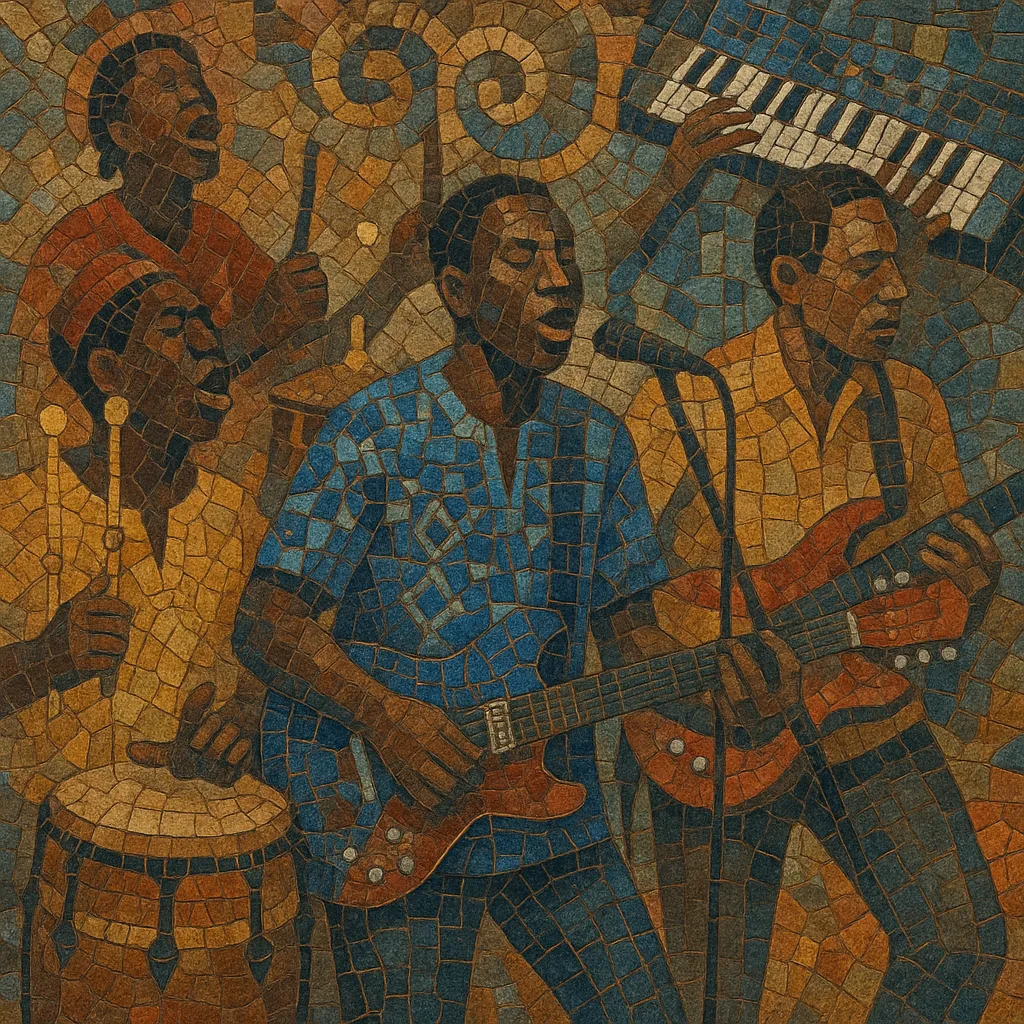Tchink System (often styled Tchink Système) is a modern Beninese dance music built on the traditional tchinkoumé rhythm and other Vodun-derived percussion patterns.
It marries polyrhythmic hand drums, bells, and call-and-response singing with electric guitars, bass, drum set, and synthesizers to create a propulsive, celebratory sound.
Typical tracks sit in a lilting 12/8 (or a tightly swung 4/4) feel, with interlocking guitar riffs reminiscent of highlife and soukous, bright keyboard stabs, and chorus hooks sung in Fon, Yoruba, and French. The style is festive and communal by design—made for ceremonies, parties, and stage performances—while still carrying social commentary and praise-singing rooted in local traditions.
Tchink System emerged in Benin in the 1980s, spearheaded by singer-bandleader Stan Tohon, who fused the traditional tchinkoumé rhythm and other Vodun-derived percussion with electric band instrumentation. Building on regional currents—Afrobeat’s horn-forward funk, highlife’s guitar lattices, juju’s talking-drum language, and soukous’ agile sebene guitar—Tohon shaped a distinct, dance-oriented repertoire tailored to urban clubs and community festivities.
Through cassettes, radio, and energetic stage shows, Tchink System spread across Benin and neighboring countries. Bands standardized arrangements: a bell (gan) or agogo marking time, layered hand percussion, drum kit with a swung backbeat, interlocking guitar figures, buoyant basslines, and choral refrains. Vocal texts blended praise-singing, social commentary, and celebration, delivered in Fon, Yoruba, and French, making the style legible to diverse audiences.
With CDs and digital platforms, Tchink System adapted to contemporary production—adding brighter synths, tighter drum programming, and pop song structures—while retaining its polyrhythmic core. Younger Beninese singers have folded Tchink System grooves into broader Afropop aesthetics, keeping the genre visible in festivals and national celebrations. Today it stands as a cultural emblem of Benin’s urban popular music, connecting ceremonial roots with modern dance-floor sensibilities.


